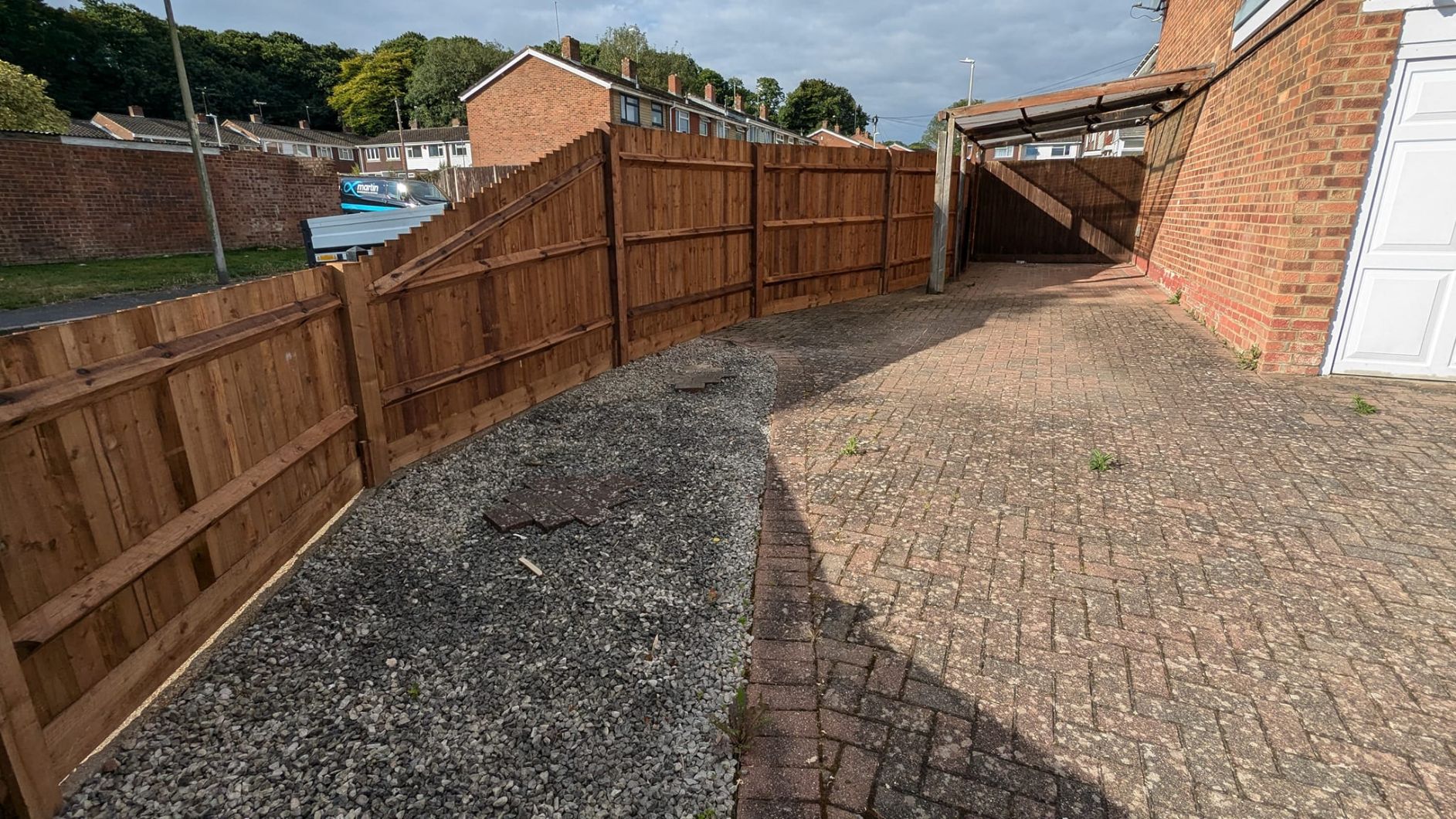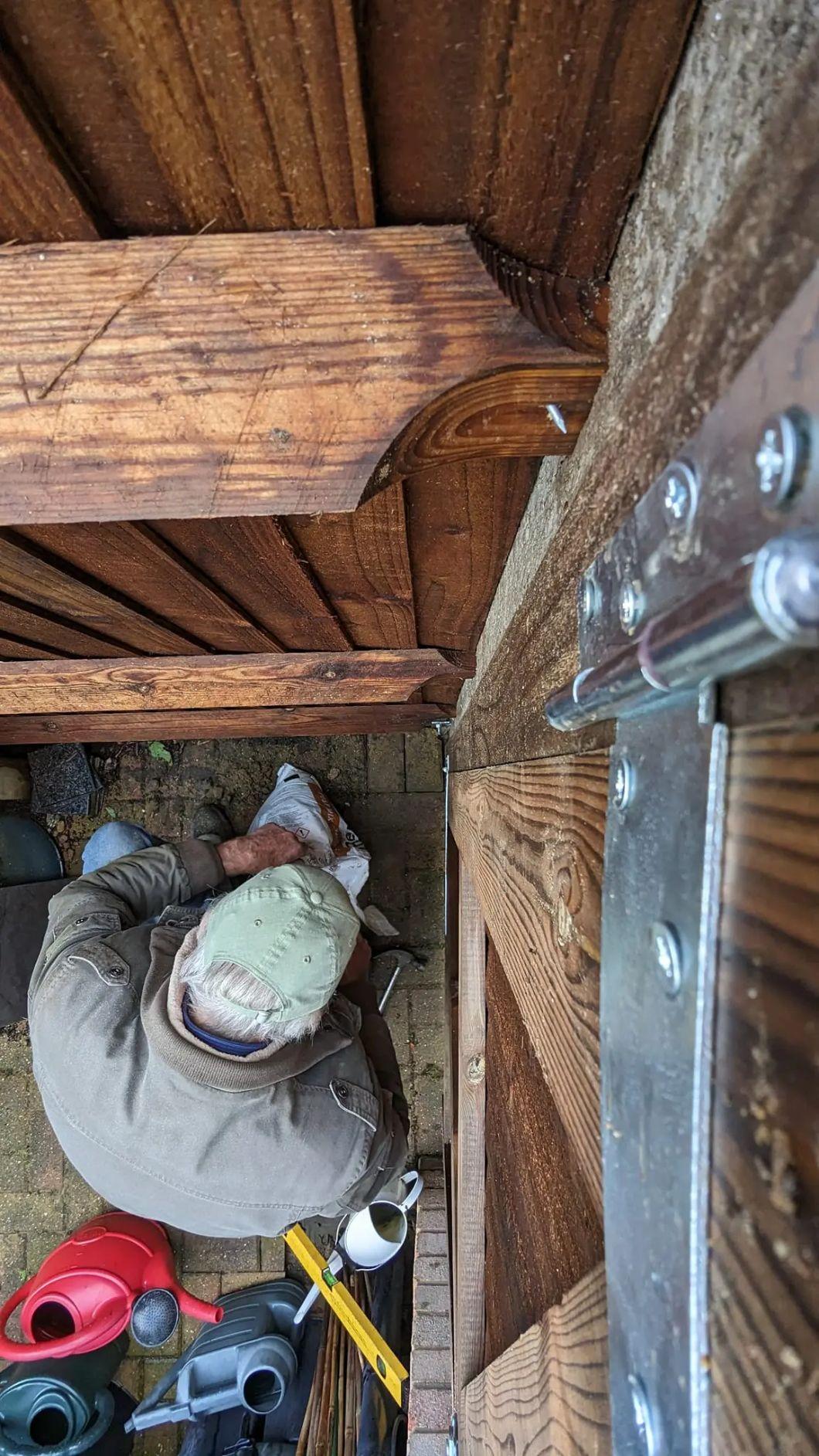How to Maintain and Repair a Wooden Fence
Maintaining and Repairing a Wooden Fence
So, you've chosen to have a wooden fence or wooden fencing installed, hopefully by us at Sheridan Fencing. In my opinion, wooden fences and wood fences look the best, offering a natural, classic aesthetic to any property or garden. However, because of the nature of wood and timber, proper maintenance is crucial. Here are some comprehensive tips on maintaining your fence and repair options to keep it looking great for years to come.
Why Choose a Wooden Fence?
Before we jump into wooden fence maintenance, let's quickly touch on why wooden fences and timber fences are popular choices:
- Natural beauty and wood grain
- Customizable (can be painted or stained with wood stain or wood preserve)
- Environmentally friendly compared to metal fences
- Cost-effective compared to some other materials like metal fence posts
- Easy to repair and replace wooden fence panels or fence boards
- Versatile - suitable for garden wooden fences, wooden gates, and more
Maintenance Tips For Wooden Fence
1. Keep soil away from the wooden posts and fence post
Seeing a concrete ring around the base of the wooden fence post is not ideal to look at, and we tend not to do this for a better appearance. However, if you want a wooden fence to last, keep that dirt away from the base of the posts. Here's why:
- Soil retains moisture, which can lead to wood rot
- It can encourage insect infestation, including wood-boring insects
- Creates an environment for fungi to grow
2. Paint or stain the fence regularly
True, who likes painting wooden fencing or wood panel fencing? (Not me, lol!) But if you do, the fence will not only last longer but keep its fresh look for longer. Remember to paint or stain the bottom of the wooden fence posts as well.
Benefits of regular painting/staining:
- Protects wood from moisture and UV damage
- Prevents warping and splitting of fence boards
- Enhances the fence's appearance
- Can extend the life of your wood fence by years
Recommended frequency: Every 2-3 years for wood stain, 3-5 years for paint
Tip: Before applying new stain or paint, use a dedicated wood cleaner to prepare the surface. This will ensure better adhesion and a more even finish.
3. Be mindful of sheds and other structures
If you're planning to install a shed next to a fence line or wooden fence panels, I advise getting guttering on that side. You'd be amazed how many repairs we do next to sheds where the rain has run off the roof and onto the wooden fence gate or garden wooden fence.
Additional considerations:
- Ensure proper drainage around all structures near the fence
- Trim overhanging branches that could damage the fence panels
- Keep climbing plants under control to prevent excess moisture retention on wooden fence boards
- If attaching anything to your fence, be careful not to create screw holes that could let water in
4. Regular inspections and cleaning
- Inspect your fence at least twice a year (spring and autumn)
- Look for signs of damage, loose boards, or protruding screws
- Clean the fence annually with a mild detergent and soft brush
- Remove any algae, mould, or mildew promptly
- Check for any broken fence post, leaning fence issues, or problems with fence stringers
5. Protect against pests and rot
- Use wood preservative or wood preserver to deter insects and prevent wood rot
- Address any pest issues in your yard that could affect the fence
- Consider metal brackets or concrete footings to protect against ground-dwelling pests
- Apply a waterproof sealant to protect against moisture and rot
- For severe cases, you might need to use wood filler or even replace entire fence boards
Repair Options For Wooden Fencing
When it comes to repairing wooden fencing, you have several options:
- Wooden Fence post replacement
- Signs you need this: severe rot, extreme leaning, or breakage
- May require a claw hammer, screws, and concrete for installation
- Consider using a fence post mender for minor issues
- Installing concrete spurs onto the wooden posts
- This can save you from taking down the entire fence
- Ideal for posts with minor rot at the base
- Uses concrete repair spurs for added stability
- Wooden fence panel replacement
- Necessary when large sections are damaged beyond repair
- Can use pre-built fence panels for quicker installation
- Ensure proper alignment with existing fence panels
- Rail replacement
- Often needed due to warping or rot in horizontal rails or arris rails
- May require new screws and an arris rail bracket
- Check both top and bottom rails for damage
- Board replacement
- For individual damaged boards on wooden fence panels
- Can often be done without replacing entire panels
- Use wood filler for minor repairs
- Ensure new boards match the existing wood grain and color
For larger repairs, you might need specialized tools like a long demolition bar or an electrical breaker. Always prioritize safety and use protective gear when undertaking any fence repair project.
DIY vs. Professional Repair
While some minor repairs can be DIY projects, consider professional help for:
- Post replacements or rotten fence post repairs
- Large-scale repairs on the entire fence
- Any repair involving concrete work or fence post holes
- Installation of new wood fences or a new fence post
- Repairing a broken arris rail or replacing many fence boards at once
At Sheridan Fencing, we're always here to help with both maintenance advice and professional fencing services. As experienced fencing contractors, we can handle everything from small repairs to full fence replacements.
Conclusion
By following these maintenance tips and knowing your repair options, you can keep your wooden fence, wood fences, or timber fence looking great and lasting longer. Regular fence maintenance not only enhances the appearance of your property but also protects your investment. Remember, a well-maintained fence can last 20 years or more!
Whether you're dealing with a tired-looking fence, a safety issue due to a leaning fence, or just want to keep your current fence panel in top condition, these tips will help. From using the right wood preservers to knowing when to call in fencing experts, proper care can make all the difference.
If you have any questions about fence maintenance or need professional assistance with wooden fence repair, don't hesitate to contact us at Sheridan Fencing. We're here to ensure your wooden fence remains a beautiful and functional part of your property for years to come.
How to Maintain and Repair a Wooden Fence (FAQ)
Q1: How often should I maintain my wooden fence?
A: Regular fence maintenance is key to longevity. Inspect your fence twice a year (spring and autumn), clean it annually, and repaint or restain every 2-3 years for stain or 3-5 years for paint.
Q2: What are signs that my wooden fence needs repair?
A: Look out for:
- Leaning fence or broken fence posts
- Rotted fence posts or boards
- Loose or missing fence boards
- Damaged rails or broken arris rails
- Rusted or loose hardware on wooden gates
- Visible wood rot or pest infestation
Q3: Can I use wood filler for repairing my fence?
A: Yes, wood filler can be used for minor repairs on wooden fence boards. It's suitable for filling small holes or cracks. However, for larger damage, replacing the entire board or panel might be necessary.
Q4: What's the best way to protect my wooden fence from rot?
A: To protect against rot:
- Apply wood preservative or wood preserver regularly
- Use a waterproof sealant
- Ensure proper drainage around fence posts
- Keep soil away from the base of wooden posts
- Use wood post caps to protect the tops of posts
Q5: How long should a well-maintained wooden fence last?
A: A well-maintained fence can last 20 years or more. Regular maintenance, prompt repairs, and protecting the wood from moisture and pests are key to maximizing its lifespan.
Q6: Should I paint or stain my wooden fence?
A: Both painting and staining have benefits. Staining enhances the natural wood grain and is easier to maintain, while painting offers more color options and can provide a smoother finish. Choose based on your aesthetic preference and willingness to maintain.
Q7: Can I replace just one fence panel instead of the entire fence?
A: Yes, you can replace individual wooden fence panels if the rest of the fence is in good condition. Ensure the new panel matches the existing ones in size and style.
Q8: How do I know if I need to replace a fence post?
A: Signs you need to replace a fence post include:
- Severe rot, especially at ground level
- Extreme leaning that can't be corrected
- Breakage or splitting
- If the post moves when you shake it
Q9: What should I do if my wooden gate is sagging?
A: For a sagging wooden gate:
- Check and tighten all hardware
- Ensure the hinges are securely fastened
- Consider adding a tension rod or cable to provide additional support
- If the gate post is leaning, it may need to be reset or replaced
Q10: Is it better to DIY fence repairs or hire a professional?
A: While minor repairs like replacing a board or tightening hardware can be DIY projects, more complex tasks like post replacement or large-scale repairs are best left to professional fencing contractors. They have the necessary tools, experience, and knowledge to ensure the job is done correctly and safely.
Q11: How can I protect my wooden fence from water damage?
A: To protect your fence from water damage:
- Apply a waterproof sealant
- Ensure proper drainage around the fence
- Install gutters on nearby structures to direct water away
- Use gravel at the base of posts to improve drainage
- Regularly clean and inspect the fence for any signs of water damage
Remember, if you're unsure about any aspect of wooden fence maintenance or repair, don't hesitate to contact us at Sheridan Fencing. We're here to help keep your fence in top condition!
Sheridan fencing - Dave Relf



